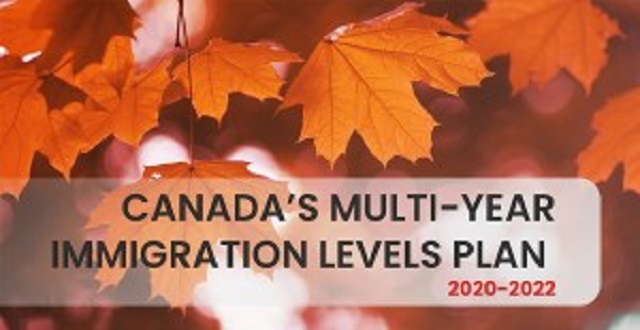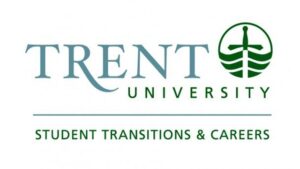
Canada will welcome more than one million new permanent residents in the next three years This was unveiled today in the federal government’s 2021-2023 Immigration Levels Plan.
Canada continues its approach to gradually increase immigration levels. This is likely to give stakeholders time to adequately plan to support a larger population.
Whereas Canada welcomed 320,000 newcomers in 2018, and 341,000 immigrants in 2019, it is again targeting the admissions of 341,000 immigrants in 2020.
It is aiming to welcome an additional 351,000 in 2021, and another 361,000 in 2022. The plan provides Canada with the scope to welcome up to 390,000 immigrants in 2022.
The most significant revelation from the announcement is Canada’s target for 2022 since today is the first time such information has become publicly available.
In 2017, Canada reintroduced multi-year levels plans after the first attempt between 1982-1984 was disrupted by a recession.
The return to multi-year plans is meant to help stakeholders such as urban planners forecast what steps they need to take to support the economic and social integration of newcomers.
Find out if you are eligible for any Canadian immigration programs
The higher levels are meant to alleviate the economic and fiscal pressures Canada is facing due to its aging population and low birth rate. More than 9 million Canadians will reach retirement age in the next decade which means Canada will become even more dependent on immigrants to maintain a healthy workforce and economy.
Economic class to lead the way
Canada will continue to admit the balance of its newcomers under the economic class, with 58 per cent set to arrive through the likes of Express Entry programs, the Provincial Nominee Program, Quebec’s programs, and other federal streams such as the Atlantic Immigration Pilot (AIP). Most of the growth will come from the economic class, as its target is going to rise by nearly 10,000 immigrants each year.
Compared with 2019, the government is increasing its PNP admission target by 20 per cent in 2022. Canada is also slated to welcome more immigrants under various pilots. It is aiming to welcome 5,200 under pilots such as the Agri-Food Immigration Pilot and the Rural and Northern Immigration Pilot. It may end up nearly doubling its intake under these pilots by 2022.
Although the AIP is set to become a permanent program, the federal government is keeping its AIP targets stable at 5,000 during the plan.
Quebec’s levels are yet to be determined for 2021 and 2022, as the federal government waits to consult with Quebec in light of the major reforms the province is currently undertaking to its immigration system.
In addition, 26 per cent will be welcomed under the family class, while the remaining 16 per cent will be admitted on humanitarian and compassionate grounds. There will be no growth under the family class. The government has set the same target for family class immigration of 91,000 newcomers over the coming three years. There will be minimal growth for those admitted for humanitarian and compassionate purposes.
Canada’s immigration levels: Past, present and future
Canada’s current immigration levels are high by historical standards. The country has welcomed 300,000 immigrants or more just five times since its founding back in 1867. On a per-capita basis, Canada’s levels are also high, as it is now welcoming 0.9 per cent of its population in immigrants. By way of comparison, the United States has welcomed an average of one million immigrants annually in recent times. However, that figure represents just 0.3 per cent of its population.
On the other hand, Canada’s current per capita intake is by no stretch the highest in its history. In the decades leading up to the First World War, Canada regularly welcomed at least one per cent of its population in immigrants. At its peak, Canada welcomed 401,000 immigrants or 5.3 per cent of its population. In modern terms, a 5.3 per cent intake would mean welcoming two million immigrants to Canada.
Canada continues to increase its immigration levels to support its high living standards. The aging of its society will weaken labour force and economic growth as its fiscal costs in areas such as health care rise. Delivering quality health care to its aging population will become even more expensive. Immigration will help to grow the size of Canada’s labour force, giving Canada a steady supply of people to contribute to its economy as workers, consumers, and taxpayers.
Today’s announcement is part of a broader trend that will likely see Canada continue to boost immigration and eventually break the 400,000-newcomer threshold. The country is poised to welcome some 3.5 million immigrants this decade, compared with 2.8 million between 2010-2019.
All told, however, demographic and economic circumstances are just one of the six factors that will shape the future of Canada’s immigration levels.
By November, the Canadian government will table its next immigration levels plan, which may contain its target for 2023.











Bonjour j'aimerais partir travailler au Canada pouvez-vous m'aider s'il vous plaît
Bonjour je veux aller travailler au canada,pouvez vous m'aider s'il vous plaît merci
Bonjour je veux aller travailler au Canada pouvez vous m'aider s'il vous plaît merci
Bjr j'aimerai immigré au Canada avec ma famille aidez moi svp
Bonjour chers tous, je voudrais bien aller m'installer au Canada pour travailler. Qui dispose d'informations pour m'aider dans ce sens. Merci bien
Bonsoir, je veux travailler au Canada comment pouvez-vous m'aider ?
Bonjour, comment faire pour immigrer au Canada ?
J aimerais immigrer travailler au canada,je voudrais savoir comment faire, les procédures ,merci bien
bonjour j'aimerai vraiment aller au Canada pouvais vous m'aider svp
Bonjour je veux allez travail a Canada avec ma famille
Bonjour à tous , j'aimerais immigrer au Canada pour travailler . orientez moi s'il vous plaît.Merci
Bonjour vous j'aimerais immigrer au Canada pour travailler avec ma femme. Quelles sont les procédures à suivre
Bonjour, j'aimerais immigrer au Canada pour travailler.s'il vous plaît orientez moi.+212645268258
Merci d'avance !
Bonjour je veux bien travailler au Canada , pouvez-vous m'aider stp+2130793401885
comment faire pour immigré au Canada
Bonjour pouvez vous m'aider pour le travail au Canada ?
Moi que dois-je faites pour immigrer au canada
Bonjour je carreleur comment pour aller au Canada aidé moi s'il vous plaît merci
Bonjour je suis carreleur professionnel marié d'une femme et nous avons 3 enfants comment faire pour aller au Canada
Comment faire pour immigrer à Canada?
Comment faire pour immigrer au Canada pour subvenir mes besoins et celles de ma famille ?si vous avez besoin de personnel suis disponible merci
Moi je suis malien actuellement en Guinée équatoriale je suis chauffeur je suis intéressé
Moi je suis beaucoup intéressé par votre processus d'immigration je sais faire un peut de chose qui pourrait participer au développement économique du Canada. Par exemple: Aide ménagère, aide cuisinière, baby Sister(bénévolat), vendeuse en boutique et je fais un peu de tresse si vous êtes intéressé par mes potentialités sachez que je suis tout à faire disponible…
Salutations à vous, j'aimerais venir travailler a Canada comment tu peux m'aider s'il te plaît
Comment faire pour imigre au Canada pour travailler
Chers (es) Adhérents (es)
TEHORA est une firme québécoise multidisciplinaire reconnue pour l'excellence de ses services professionnels, de nature technique et de gestion de projets à l'échelle nationale et internationale. Nous sommes enthousiastes, dynamiques et déterminés à faire de l’excellent travail chaque jour. TEHORA lance un avis de recrutement international pour tout diplômé voulant mettre ces connaissances en évidence afin de lui permettre de bien assurer ses responsabilités. Plus de 23 000 hommes et femmes qui ont plus qu’un simple emploi au TEHORA. Chacun et chacune fait partie intégrante de notre formidable réussite. Pour combler les besoins que créent l’expansion de nos activités et les départs à la retraite, nous devons renouveler notre effectif avec des personnes motivées, passionnées et avec un bon esprit d’équipe. Des professionnels dont les compétences et les intérêts se jumellent bien à nos nombreuses possibilités de carrière, ainsi qu’à notre entreprise et à nos valeurs.
QUALIFICATIONS APTITUDES & EXPÉRIENCES REQUISES
1 – Avoir 19 ans au moins et 55 ans au plus.
2 – Être de bonne moralité.
3 – Être disponible à voyager immédiatement.
4 – Savoir bien parler le français si possible l'Anglais
5 – Être titulaire du Baccalauréat ou autre diplôme professionnel
6 – Expérience professionnelle minimum 1 Ans à préciser :
PROCÉDURES DE RECRUTEMENT :
– Un Curriculum Vitae (CV)
– Une Lettre de motivation
Merci de bien vouloir nous faire parvenir vos demandes d'emploi via l'adresse électronique du Bureau de recrutement. En retour, nous allons vous joindre le formulaire d’inscription et les pièces à fournir. E-mail : emploi.tehora.ca@job4u.com
Avis important :
Seuls les candidats sélectionnés seront contactés.
Cordialement,
LE DIRECTEUR EXÉCUTIF
PROGRAMME GROUPE TEHORA INC.
Slm khoya momkin tfidni bchi fikra
Comment faire pour imigre at Canadá?
Bonjour je suis intéressée comment faire pour a le la ba
Comment faire pour être émigré au Canada